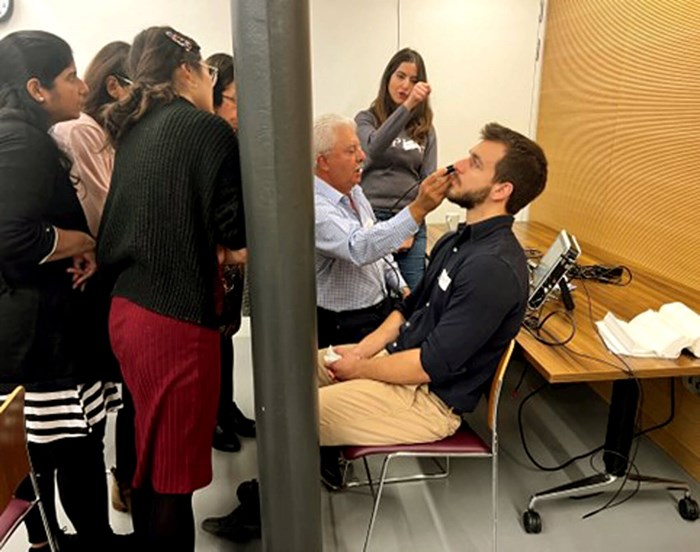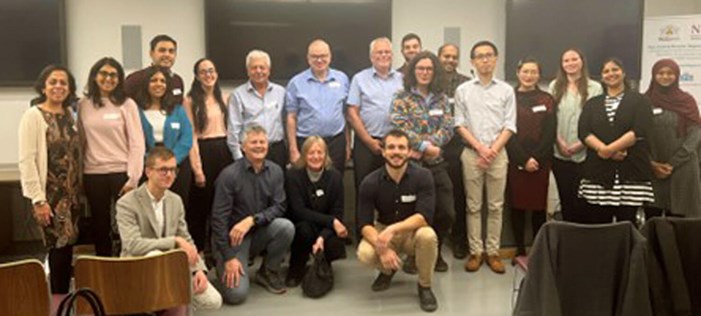I had the pleasure to attend the Practical Ultrasound Course run by the Royal College of Ophthalmologists. The course shows what are the strengths and limitations of sound waves and how to use them.
Should you ever visit Tuscany, you might encounter numerous paintings of St Lucy, a Saint frequently portrayed holding her eyes on a silver plate. Canonically she is the patron of ophthalmology, her name being derived from the Latin word lux which means light. Although light, that is used in the slit lamp and OCT, is an extremely useful diagnostic tool, it can be complemented well with soundwaves, the ultrasound.

Hatem Atta demonstrating the use of the B Scan.
The practical ultrasound course told me what an ophthalmologic ultrasound is, when and how to use it, and what I can expect to see in my patients. I enjoyed the diagnostic part when the lecturers explained what diseases I would likely see and how I could distinguish one pathology from another. I also enjoyed the explanation of the mechanisms used to generate the soundwaves.
However, I must confess I particularly enjoyed the practical when we practised the use of A-scan, B-scan, and UBM on each other in groups of four, under the supervision of skilled experts who have a wealth of experience to offer. This allowed me to polish my systematic approach to ophthalmic ultrasound, which is essential as the modality is operator-dependent, and if the operator’s approach has a blind spot then so will the differential diagnosis. Practice of our systematic approach is especially important in ophthalmic ultrasound as patients, unlike St Lucy, will not be willing to offer us their eyes on a silver plate to examine.

Attendees of the RCOphth 2023 Ophthalmic Ultrasound Course.
For details on practical ophthalmic ultrasound courses, please look at the RCOphth Website or Contact Daybreak Medical: info@daybreakmedical.com | 0208 894 6601



